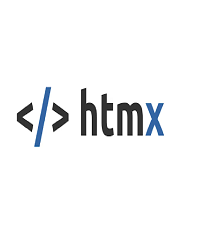Why Use HTMX Now?
- Simplicity Over Complexity:
- Modern web development has shifted toward complex frameworks like React, Vue, or Angular. However, HTMX offers an alternative for developers who want to build dynamic websites without getting caught up in these heavy front-end frameworks. HTMX allows you to add interactivity without writing custom JavaScript, making it simpler and faster to implement features.
- Progressive Enhancement:
- HTMX supports progressive enhancement, meaning it works well with traditional multi-page web applications. You can incrementally improve your website with dynamic features. This is particularly useful if you’re working with existing server-rendered applications and want to gradually introduce more interactivity without overhauling the entire system.
- Server-Driven Interactivity:
- HTMX allows you to drive interactivity from the server side. Instead of building a front-end with all the logic and views (like in traditional SPAs), you let the server handle rendering and business logic while HTMX updates only the relevant parts of the page. This reduces the complexity on the client side and often results in better performance.
- Reduces Need for JavaScript:
- Many developers are moving toward more minimal JavaScript solutions. With HTMX, you don’t need to write JavaScript for things like AJAX requests or DOM manipulation. This leads to cleaner, more maintainable code and allows back-end developers to implement dynamic features without extensive JavaScript expertise.
- Better SEO and Accessibility:
- Since HTMX leverages traditional server-rendered HTML, your website remains more SEO-friendly and accessible compared to client-side frameworks like React, which might require additional configuration for proper SEO. Server-driven HTML ensures that your content is readily available for search engines and users who may have JavaScript disabled or limited support.
- Reduced Page Reloads:
- HTMX lets you send partial HTML updates to the browser, avoiding full page reloads. This makes the website feel faster and more responsive, while still maintaining the server-side architecture. For example, you can load new content into a section of the page or submit a form without refreshing the entire page.
- Minimal Overhead:
- Compared to JavaScript-heavy frameworks, HTMX adds very little overhead. It’s lightweight and easy to implement, and you can start using it in just a few lines of code, making it ideal for smaller projects or teams that don’t need the complexity of a full SPA framework.
- Faster Development with Less Boilerplate:
- HTMX abstracts away much of the repetitive boilerplate that comes with traditional JavaScript development (such as setting up event listeners, handling AJAX, and manipulating the DOM). This can significantly speed up development, especially for common tasks like form handling or content loading.
- Integration with Existing Tools:
- HTMX works well with back-end frameworks (Django, Flask, Ruby on Rails, etc.). If you’re already using these frameworks, you can integrate HTMX easily without a complete rewrite of your existing codebase.
- Community & Ecosystem:
While HTMX is newer compared to frameworks like React, it’s gaining traction in the web development community. Many developers appreciate its simplicity and the fact that it enables them to avoid the complexity of modern JavaScript frameworks while still achieving dynamic user experiences.

